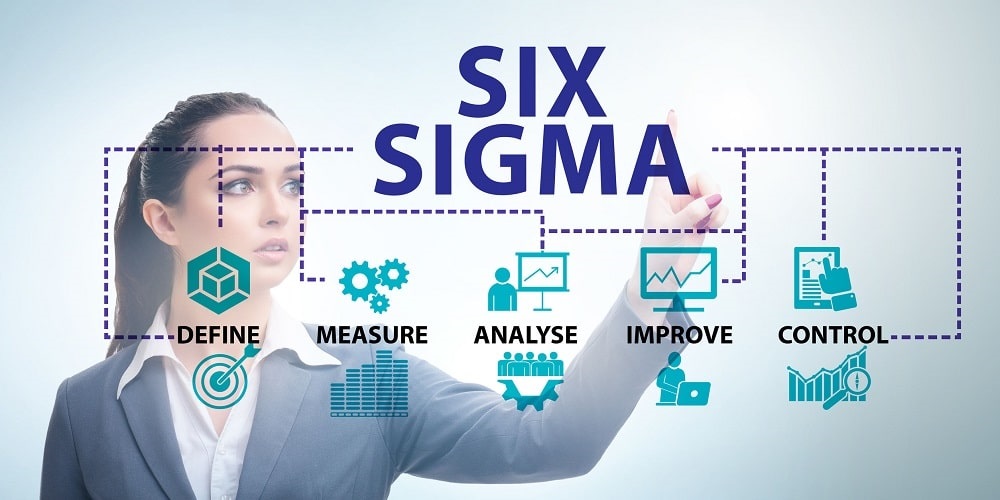Mobile Residents - Learn Lean Six Sigma’s History Here
Contact Us

Lean Six Sigma has become a more common term and method over the past ten years, which is why many people are eager to learn more and implement it. However, it can be hard to know where to start as the methodology involves a lot of information, practice, and keeping up with the industry and even history can prove to be a challenge. At Lean Six Sigma Curriculum for Mobile High School Students of Alabama, we like to start with LSS history, so you have a good base of what this method is about and why it is so popular nowadays.
Let’s start by stating that Lean Six Sigma combines Japanese management principles and methods that can be traced back to the United States. Although it’s not Japanese, this topic can be complicated to discuss as it originated from competing with the Kaizen methodology originated and implemented in Japan, which makes people confused as they believe both have the same origins.
Kaizen, which encourages cooperation and commitment as a means for continuous improvement, is the Japanese influence of the Lean Six Sigma methodology, but it is not entirely related to it; instead, LSS only adopts some of the basics around improvement and growth.
Kaizen is unique in that it emphasizes small, positive changes. It also eliminates redundant steps and processes, which reduces time. Many Japanese companies used this Japanese approach to increase their market share for their products, ideas, and services.
LSS can then be traced back to the USA, where it was created to compete with Japanese industries, as mentioned earlier, during the late 80s.
The main principles are focused on reducing waste through non-value-adding actions and are influenced by two individual methods: Lean and 6 Sigma.
How Everything Started
It is important to understand that the Lean Six Sigma methodology combines two different methodologies mentioned.
Thus, knowing the differences between Six Sigma and Lean plays a crucial role in knowing LSS, its goals, and how companies can achieve improvement with it.
For starters, because of its structure and principles, Lean is considered a way of “thinking.”
This is why we will be moving to Toyota and the way it refers to its system as the “Toyota Production System” (TPS). John Krafcik was a student of the former founder of Toyota, and he was searching for a name that would describe the TPS system.
He wrote down the differences and characteristics between Toyota’s system versus traditional mass production on a whiteboard. After his research and analysis, he concluded that Toyota’s system requires less of everything in order to create value.
This whiteboard and conclusion quickly led to what is known as Lean Thinking. It focuses on reducing waste, non-value-added activities, and other areas.
Lean is built on its own principles and foundations. Understanding the customer is key to understanding each process’ value stream and waste. Value flow is also based on continuous pursuit.
On the other hand, Six Sigma is an American-based methodology dating back to the 1980s. Motorola is its original inventor and user.
Motorola was having a difficult time competing with foreign companies in its early days. Thus, its CEO Bob Galvin set a goal for a tenfold increase in five years.
This plan was focused on global compatibility, participative management, and quality improvement, as well as global competitiveness. Motorola quickly adopted six Sigma as the standard for all business processes in order to achieve these goals.
Six Sigma was also taught to all Motorola employees. This ensured that everyone followed the same standards.
Six Sigma and Lean, taken together, recognize that change is the only way to go. Six Sigma is an excellent addition to the Lean approach as it complements the need for solving problems but, first, identifying them.
This is why LSS was created when they combined and set more principles from each of them, as it fills the gaps when people consider implementing both methodologies individually.

How Can You Define LSS?
LSS has been used in many different ways throughout history, and to keep it simple, it is a methodology designed to improve productivity and efficiency and reduce waste.
Understanding the principles and solutions to Lean, Six Sigma, and Kaizen is a great idea to have a good concept of how it works and come up with your own concept and definition.
Lean allows employees and companies to better understand customers, prioritize their needs, and implement lean. To achieve perfection, they can focus on the company’s value stream, processes, and value flow.
Six Sigma is dedicated to excellence and a system that promotes efficiency and clean operations.
Kaizen is a five-part method that emphasizes teamwork, personal discipline, better morale, and quality circles. It also includes suggestions for improvement.
You can see the similarities between Six Sigma and Lean and how Kaizen affects the whole process by reading more about LSS.
Lean Six Sigma is a tool that can be used to benefit companies and businesses, as well as professionals and students who want to gain career advantages but also develop new skills that can help them in their personal projects.
When working with Sigma, these are some results you can get:
- Learn how to reduce waste.
- Increase efficiency.
- Reduce errors.
- The company will be less at risk.
- It is possible to improve your time management.
- Lower costs translate into higher revenues and better salaries.
- Motivate employees.
- Leadership and innovation are fundamental concepts you can implement and learn about.
Lean Six Sigma Training
Contact our Lean Six Sigma Curriculum Pros of Mobile team. We know the history and workings of Lean Six Sigma, and we are able to teach students in high school, college, business professionals, and whole companies how to incorporate LSS into their daily lives and processes, depending on who is reaching for help.
We want you to be a valuable asset in every place and company where you work.
Employers and experts who have been certified by one of our programs can help companies grow and innovate faster, while companies and schools that decide to establish a program can bring great improvement their way.


